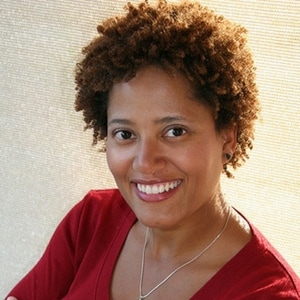 Sian Proctor, Ph.D., is a geology and sustainability professor who not only teaches but also designs curriculum, science materials, and educational games. She was a finalist for the 2009 NASA Astronaut Program, was on the Discovery Channel reality TV show called The Colony, was the Education Outreach Officer on the 4-month NASA funded Mars simulation, and a PolarTREC teacher studying climate change research in Barrow, Alaska. Last year Sian was featured in a new PBS series called Genius with Stephen Hawking. Sian is in Episode 3, “Are We Alone?”, where she learns how to search for intelligent life in the universe. This summer Sian will be hitting the high seas as a National Oceanic and Atmospheric Administration (NOAA) 2017 Teacher at Sea. Dr. Proctor is also a motivational speaker, specializing in women and minority leadership, and encouraging girls to pursue STEM. She earned her degrees from Arizona State University and Edinboro University of Pennsylvania. Below she shares a little about her career and the inspiration behind it. What is your specific area of STEM? Geology, Planetary Science, & Sustainability How would you explain your STEM field to young girls? I teach people about ways in which the Earth creates resources and hazards, but also about human’s impact on the Earth. What traits might a child possess that may indicate an interest or aptitude for your STEM field? Independence, curiosity, adventurous, spatial intelligence. What did you know about your STEM field when you were a child? My father was a scientist and he encouraged me to be inquisitive. I loved aviation and astronomy and he told me I could be anything I wanted to be. So from an early age I knew I would study science but I didn't have any particular focus. I was curious about everything. Why did you choose your STEM field? Were you inspired by someone? I wanted to move out west and I applied to a variety of schools. Arizona State University gave me the best financial package which included being a teaching assistant (TA). Becoming a TA changed my life because I realized my passion for teaching science. After getting my MS in Geology, I became a full-time geology professor and, over time, got my Ph.D. in Science Education. What are some really cool things that people in your profession work on? As a geoscience professor, I have traveled, conducted research, and taught around the world. The Earth is my living laboratory. I have learned about astronomy in Chile, investigated climate change in Barrow, Alaska, and lived in a NASA Mars Simulation in Hawaii. This summer I'm going to Kodiak, Alaska to learn about fish habitats. Geoscientists are modern day explorers of the Earth. What inspirational message would you give young girls to inspire them to pursue STEM? Be a GeoExplorer. That means always be inquisitive about the world around you from your backyard to the moon - STEM is all around you. Thank you for contributing, Dr. Proctor!
0 Comments
 Rumman Chowdhury is a data scientist specializing in the field of Artificial Intelligence (AI). In addition to her own cutting edge work, Rumman serves as an advisor for several technology (AI) startups and is a global speaker. She holds degrees from MIT, Columbia University and the University of California, San Diego. Here she shares a little about her career in technology and the inspiration behind it. What is your specific area of STEM? Data Science, Artificial Intelligence How would you explain your STEM field to young girls? I find the coolest technology to figure out the best way to improve people's lives. What traits might a child possess that may indicate an interest or aptitude for your STEM field? Creativity, curiosity, desire to learn, ability to work well in teams and alone, thinks ‘big picture’ about the results of a project. What did you know about your STEM field when you were a child? I didn't know anything about it! In fact, it didn't exist when I was a kid. All I knew was that I liked doing research and figuring things out. I read a lot of books. A lot. In everything, not just science. I would wander the library and pick up books that looked interesting to me. I also had teachers who encouraged me to learn and explore. Why did you choose your STEM field? Were you inspired by someone? I came here on my own. I've always liked data and numbers and explaining human behavior using this data. I was in graduate school when the field I'm in - data science - became popular. It was scary, but I left my grad program early to become a data scientist AND finish my PhD at the same time. What are some really cool things that people in your profession work on? Oh man, what don't we do? Data scientists use data to make things that customize to your life. We are the people who show you the next movie you'll like, or pick out the songs you might want to listen to. We help make self-driving cars and build the world of the future! What inspirational message would you give young girls to inspire them to pursue STEM? Work your hardest, be your best, and support other girls around you. Thank you for contributing, Rumman! 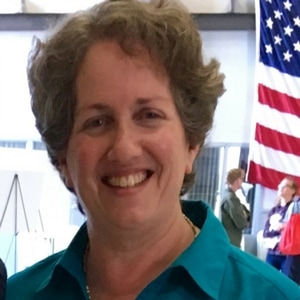 Jill Meyers learned to fly an airplane at age 17, joined the Air Force, and later earned her Aerospace Engineering degree from the University of Texas at Austin. Here she shares a little about her career and the inspiration behind it. What is your specific area of STEM? Aerospace engineering How would you explain your STEM field to young girls? Aerospace Engineering is about designing and building aircraft (aeronautical) and spacecraft (astronautical) of all shapes and sizes. You can work on small airplanes like a Cessna or big military jets like the F/A-18s that the Navy Blue Angels fly! You can work on rockets or capsules that will carry astronauts to Mars someday. What traits might a child possess that may indicate an interest or aptitude for your STEM field? A child that enjoys math and science in school may exhibit an aptitude for engineering. Many kids play with radio-controlled aircraft or toys like Legos that allow them to build things. Even paper airplanes often lead towards careers in Aerospace! What did you know about your STEM field when you were a child? My first indication was my love for building plastic models - I built airplanes and aircraft carriers when I was very young. I went up in a small Cessna when I was 13 years old, and that was IT for me! So I learned to fly at the age of 17 and then joined the Air Force, where I later got my engineering degree. My parents were very supportive of my dreams to either fly or build airplanes when I grew up! Why did you choose your STEM field? Were you inspired by someone? As I mentioned, I fell in love with airplanes at a young age. I was going to be a doctor until the first Space Shuttle launched into space. At that time I decided to be an Aerospace Engineer. I wanted to be an Astronaut but didn't have perfect grades in college which is required. I really didn't have a mentor, although I really wish I had. I just read a lot about pilots and astronauts when I was a teenager. What are some really cool things that people in your profession work on? I'll just use my own experiences to answer this one!
With an Aerospace Engineering degree, you can work on so many things! What inspirational message would you give young girls to inspire them to pursue STEM? My primary message is that you CAN be anything you want to be! Find things that you LOVE doing and figure out how to turn that into a job. Find people already doing that job and talk to them! Look for mentors - they are all around you! Reach for the stars and never give up! Thank you for contributing, Jill! 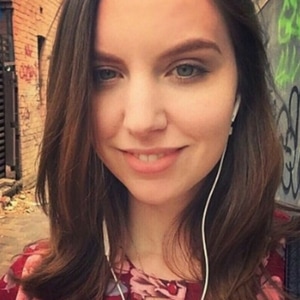 Jacqueline Musiov is pursuing her degree in physics from Swinburne University of Technology (Australia). Here she shares a little about her career in technology and the inspiration behind it. What is your specific area of STEM? Physics, with a minor in Chemistry How would you explain your STEM field to young girls? Entering into any STEM field is a marathon, not a sprint. Physics explains how the world works, and when you learn more and more about the universe, you begin to realise just how much is out there, and how much more there is to learn! What traits might a child possess that may indicate an interest or aptitude for your STEM field? When a child stares up at the sky every night, chances are they are wondering what is out there. I believe curiosity in a child is a good sign, as the children who try to understand their questions will do that later on in life. Children who are naturally gifted in maths and problem solving also develop good STEM skills. What did you know about your STEM field when you were a child? I knew the bare minimum of any STEM field as a child. The schools I went to did not provide adequate teaching and/or tools. It was not until after high school when I started to explore my hobbies and interests that I found my passion in life - Science. As a huge science fiction fan, that also gave me the courage and confidence to go into the STEM field. Why did you choose your STEM field? Were you inspired by someone? I have always been an inquisitive person, asking 20 questions a day, asking how things work, why they work. The turning point in my life came when I was with my sister one day and we saw a cafe that had the sign of the caffeine element, my sister said that she wished she knew what that meant. For a moment I thought she was joking, but she was serious. From then on, I made it my mission to pursue my dreams of studying science (in particular Physics & Astronomy), in hopes of one day teaching young children the importance and joy of learning science! What are some really cool things that people in your profession work on? Since my chosen field is Physics, many of my tutors and professors are Astrophysicists and Astronomers. Each year they send two or three students to Hawaii where they have the chance to look at the world’s biggest telescope and do some research. Many students also get the chance to visit major astronomy centres such as NASA. What inspirational message would you give young girls to inspire them to pursue STEM? Never give up, and do not let your fear control you. Entering into a STEM field can be very scary most of the time, but it is one of the most rewarding things you will ever do. You gain more than just a qualification if you choose to study a STEM degree, you gain an understanding of the world! Science, Technology, Engineering and Maths are all universal topics, so no matter where you end up, your skill can be used anywhere. When you enter the STEM field it's not just for the money, it's for the passion you have. If you love something, pursue it. Thank you for contributing, Jacqueline! 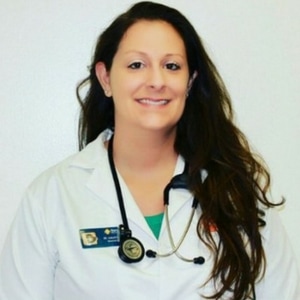 Sara Goldstein is a passionate veterinarian and scientist. She earned her Doctor of Veterinary Medicine degree from Purdue University and her Bachelor’s degree in Molecular and Cell Biology from the University of Connecticut. Here she shares a little about her career and the inspiration behind it. What is your specific area of STEM? Molecular and Cell Biology, and Veterinary Medicine. How would you explain your STEM field to young girls? Veterinary medicine is the branch of medicine that deals with the prevention, diagnosis and treatment of disease, disorder and injury in non-human animals. What traits might a child possess that may indicate an interest or aptitude for your STEM field? A child must first possess compassion towards animals and a desire to take care of them! Many children may have hobbies related to animals such as horseback riding or being a part of a 4-H club. They also need to show an interest in science and anatomy early on. This field requires many hours of dedicated training and studying; without the true passion from childhood few would make it through. Other critical traits of a successful veterinarian that will develop overtime are: communication skills, technical skills, and surgical skills. The desire that children have to constantly be learning need to stay with you throughout your career. What did you know about your STEM field when you were a child? I knew very little about veterinary medicine as a child. I knew we took our cats to the "vet" to get their vaccinations and to keep them healthy. I always loved animals and grew up with cats and horses. I started horseback riding and working at the stables when I was 8 years old. No one in my family had a career in the science field. All throughout middle school, high school, and college I always loved all the chemistry and biology classes. I started thinking more about a career in the medical field; human or animal. After working in a small animal veterinary clinic I knew this career was the right one for me. With the support of my family, I made up my mind to apply to veterinary school no matter how competitive it appeared to be. Why did you choose your STEM field? Were you inspired by someone? Veterinary medicine is a large and ever changing field. No matter what your specific interests are there is a career within veterinary medicine for you. These positions can range from being a veterinarian in a private practice to a state veterinarian, all the way to a veterinarian working for a research or pharmaceutical company. The sky is really the limit for veterinarians! What are some really cool things that people in your profession work on? Our best visits are the healthy puppy and kitten visits!! They are always so playful and want to lick you. I also love to watch them grow as we see them every few weeks! Sometimes we have kitties or puppies come in so small we get to bottle feed them! Another cool thing we get to do is take xrays (radiographs) and see bones and organs if a pet isn't feeling well or has a hurt leg. Hopefully it is not anything too serious! Lastly, we get to diagnose and treat diseases based on these xrays, bloodwork, and other testing. It is like a big puzzle where we have to make all the pieces fit. Early diagnosis and treatment of any disease helps pets live longer and happier lives! What inspirational message would you give young girls to inspire them to pursue STEM? Follow your passion. Thank you for contributing, Dr. Sara! 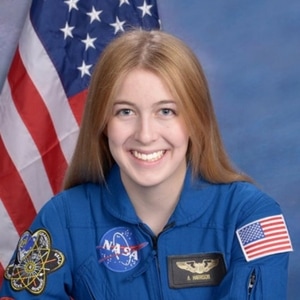 Abigail Harrison is pursuing her degrees in Astrobiology and Russian at Wellesley College and aspires to be a scientist and NASA astronaut. Abigail has also built a strong online and national speaking presence as Astronaut Abby, sharing her passion for promoting STEM education and space exploration. She is the founder of The Mars Generation, a nonprofit focused on exciting kids and adults about space and STEM. Here she shares a little about her career and the inspiration behind it. What is your specific area of STEM? Astrobiology How would you explain your STEM field to young girls? I study whether or not life exists on other planets. What traits might a child possess that may indicate an interest or aptitude for your STEM field? Curious, inquisitive, always asking questions and trying to figure out how things work, taking apart things, interested in learning, logical in thinking, love learning, excited about the world around them. What did you know about your STEM field when you were a child? I was always fascinated by the stars and space as a young child and knew I wanted to go there. My parents and others fed my curiosity about STEM and space and encouraged me to pursue my interests. Why did you choose your STEM field? Were you inspired by someone? I have been taking college level science courses since high school and have always been fascinated by science and loved learning about it. After taking all kinds of science courses, I knew biology was my preferred field and astrobiology is an interest because of my love for space. It was a natural fit. What are some really cool things that people in your profession work on? Getting to explore how organisms respond to different stimulus is a lot of fun. Exploring whether life exists on other planets is fascinating and the opportunities are endless. What inspirational message would you give young girls to inspire them to pursue STEM? I encourage girls to pursue what they are excited and passionate about. And not to be afraid to Dream Big. Act Big. And Inspire Others. Thank you for contributing, Abigail (Astronaut Abby)! 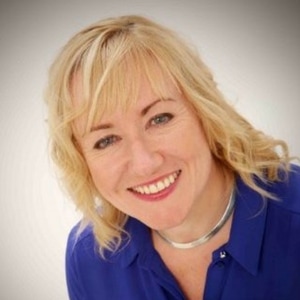 Sue Pearson earned her PhD in molecular biology and microbiology from Cranfield University (UK), and her BSc degree in biochemistry from Brunel University (London). Here she shares a little about her career and the inspiration behind it. What is your specific area of STEM? Life Sciences (the study of living organisms, including biology, microbiology and biochemistry) How would you explain your STEM field to young girls? I write articles and present TV programmes about diseases, new drugs and machines that automate laboratory tasks. What traits might a child possess that may indicate an interest or aptitude for your STEM field? Being interested in how living things do what they do. What did you know about your STEM field when you were a child? I didn't know much about my stem field when I was a child but I was encouraged at school and my parents bought me a chemistry set and a microscope when I was 11 so I had my own mini lab to play in. When my goldfish died I pickled it in vinegar and examined parts of it under the microscope. Why did you choose your STEM field? Were you inspired by someone? I wanted to be a forensic scientist when I was 11 as I was fascinated by the character of Sam in the TV show Quincy. I wrote to the forensic service and they told me what I needed to become a forensic scientist so I did my first degree in biochemistry with this in mind. What are some really cool things that people in your profession work on? They work on drugs to cure cancer and rare disease. (View Sue’s programme for Cambridge TV on rare diseases). What inspirational message would you give young girls to inspire them to pursue STEM? You can work in an area that helps cure people of terrible diseases and do something great for mankind. Thank you for contributing, Sue! 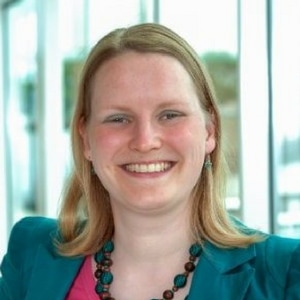 Linda van der Pal earned her Information Systems degree from the University of Amsterdam. Here she shares a little about her career and the inspiration behind it. What is your specific area of STEM? IT (Information Technology) How would you explain your STEM field to young girls? Everybody uses computers, phones and tablets. When you work in IT, you help to make that possible. All computers need programs to tell them what to do. As a programmer you are the one to tell the computer what it should do. What traits might a child possess that may indicate an interest or aptitude for your STEM field? A love to solve puzzles, a desire to help people or a desire to improve the world. What did you know about your STEM field when you were a child? We got our first personal computer when I was 11. Why did you choose your STEM field? Were you inspired by someone? Being able to control computers seemed like an awesome ability. Then later on I saw everybody in high school doubting what they wanted to do, so I stuck with computer science. And never regretted it since. What are some really cool things that people in your profession work on? Creating games, programming robots (for example the machine that collects your suitcase at the airport). What inspirational message would you give young girls to inspire them to pursue STEM? With an education in IT, you can work anywhere at all! Travel companies, big banks, gaming companies, or even Google! Thank you for contributing, Linda! |
Participate!Women in STEM, we invite you to take our survey. You'll inspire young girls and contribute to the success of the STEM Girls Books series! Categories
All
Archives
March 2020
|

 RSS Feed
RSS Feed